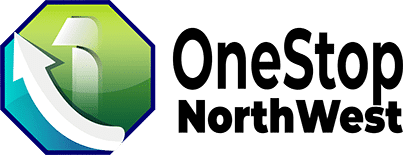
Optimizing your site for search engines is the key to enhancing your website’s visibility and attracting visitors through organic search results. In this introductory guide, we’ll walk you through the basics of SEO and why it is fundamental for your digital marketing strategy.
Here’s a quick rundown if you need immediate answers:
- SEO is the process of improving a website to increase its visibility on search engines like Google and Bing.
- Search Engine Results Pages (SERPs) are where your website can show up when users search for related terms.
- Visibility is achieved through strategic use of keywords, quality content, and technical improvements.
SEO doesn’t just happen by chance; it requires a well-planned approach and continuous effort. By practicing effective SEO techniques, your website can rank higher on SERPs, making it easier for potential customers to find your business.
Infographic on Key SEO Elements:

I’m Dylan Cleppe, and with over 20 years in customer service and digital marketing, I’ve helped businesses maximize their online presence through optimizing your site for search engines. Let’s dive deeper into understanding SEO and how it can propel your business forward.
Understanding SEO
Search Engine Optimization (SEO) is the practice of enhancing a website to increase its visibility on search engines like Google and Bing. By optimizing your site for search engines, you improve your chances of appearing in the top results on the Search Engine Results Pages (SERPs). This is crucial because higher visibility means more traffic, which can lead to more business.
Why is SEO Important?
SEO is a critical marketing channel. According to a 2019 BrightEdge study, organic search delivers 53% of all website traffic. With over 8.5 billion searches happening every day on Google, capturing even a fraction of this traffic can significantly impact your business.

SEO drives real business results. It helps brands, businesses, and organizations of all sizes stand out in a crowded digital landscape. Unlike paid campaigns, which stop delivering traffic once the budget runs out, good SEO work is sustainable and continues to bring in visitors over time.
Search Engines: The Gatekeepers of the Web
Search engines like Google, Bing, and Yahoo use complex algorithms to determine which pages to show for any given search query. Here’s a simplified process of how they work:
- Crawling: Search engines use bots to scan the web and find new pages.
- Indexing: Relevant content and metadata are analyzed and added to a database.
- Ranking: Algorithms consider various signals to rank pages based on relevance and quality.
Organic Search vs. SEM and PPC
When discussing SEO, differentiate between organic search, SEM, and PPC:
- Organic Search: This is the traffic you get for free. Users find your site because it ranks well on SERPs due to effective SEO practices. Organic search is valuable because it’s targeted and cost-effective over the long term.
- Search Engine Marketing (SEM): This is a broader term that includes both SEO and paid search strategies. SEM aims to increase visibility through organic and paid methods.
- Pay-Per-Click (PPC): This is a form of paid search marketing where businesses pay for their ads to appear on SERPs. While PPC can provide quick results, it requires ongoing investment. Once you stop paying, the traffic stops.

The Power of SEO
SEO is not just about driving traffic; it’s about driving the right kind of traffic. When people search for something specific and find your site, they are more likely to engage, convert, and become loyal customers. Additionally, a well-optimized site builds trust and authority, which are key elements that search engines reward with better rankings.
Next, we’ll explore Keyword Research—the foundation of any successful SEO strategy. Understanding how to identify and use the right keywords can make a significant difference in your site’s visibility and performance.
Keyword Research
Effective keyword research is the cornerstone of any successful SEO strategy. It helps you understand what your potential customers are searching for and how you can meet their needs. Let’s break down the steps to master this critical aspect of SEO.
Keyword Identification
Start by creating a seed list of keywords. These are the basic terms and phrases your ideal customers might type into search engines. Think about their interests, pain points, and goals. For example, if you run a bakery, your seed list might include “fresh bread,” “gluten-free cakes,” and “best bakery near me.”
Keyword Tools
To refine your seed list and find more opportunities, use keyword research tools. Here are some popular ones:
- Google Keyword Planner: This free tool shows you search volumes and suggests related keywords.
- SEMrush: A powerful tool that reveals what keywords your competitors are ranking for.
- Ahrefs: Offers insights into keyword difficulty and can help you find content gaps.
Search Terms and Keyword Analytics
When using these tools, pay attention to search volume and competition. Search volume tells you how many people are looking for a term each month. Competition indicates how hard it is to rank for that keyword. Aim for keywords with a good balance of high search volume and low competition.
For instance, instead of targeting the highly competitive keyword “shoes,” you might focus on a long-tail keyword like “women’s running shoes for flat feet.” Long-tail keywords are more specific and often less competitive, making them easier to rank for.
Google Search Console and Bing Webmaster Tools
Once you have your keywords, track how your site is performing for these terms. Google Search Console and Bing Webmaster Tools are invaluable for this.
- Google Search Console: Helps you monitor your site’s presence in Google search results. You can see which keywords are driving traffic and identify any issues that might be affecting your rankings.
- Bing Webmaster Tools: Similar to Google Search Console but for Bing. It provides insights into your site’s performance on Bing’s search engine.
Putting It All Together
Once you’ve gathered your data, organize it in a spreadsheet. Group similar keywords into clusters and prioritize them based on their potential. This will help you create a focused and effective content strategy.
For example, if you find that “gluten-free cakes” has a high search volume and low competition, you might decide to write a series of blog posts about gluten-free baking tips, recipes, and local ingredient sources.
Next, we’ll dive into On-Page SEO Techniques—how to use your keywords effectively within your content and optimize other on-page elements for better search engine visibility.
On-Page SEO Techniques
Content Quality
“Content is King” might sound cliché, but it’s the golden rule of SEO. High-quality content attracts visitors and keeps them on your site. But what makes content “high-quality”? It’s content that is:
- Relevant to your audience’s needs and interests.
- Informative and provides value, like answering a question or solving a problem.
- Engaging enough to hold your audience’s attention.
For instance, if you run a bakery, a blog post titled “5 Tips for Baking Perfect Gluten-Free Bread” would be more engaging and relevant than a generic post about bread. Google loves content that users find helpful. If people spend time on your site, share your content, or interact with it, Google takes notice.
Metadata
Think of metadata as the behind-the-scenes data that tells search engines what your webpage is about. This includes:
- Title Tags: The title of your page that appears in search results. It should be catchy and include your main keyword.
- Meta Descriptions: The brief description under your title in search results. Although it doesn’t directly impact your ranking, a compelling description can improve click-through rates.
- Alt Text: Descriptions for images that help search engines understand what the image is about. This is crucial for SEO and accessibility.
Both title tags and meta descriptions are crucial for making a strong first impression in search results. For example, a meta description like “Learn how to bake delicious, gluten-free bread with our easy-to-follow tips and tricks” can entice users to click on your link.
Internal Linking
Linking to other pages on your site does two things:
- It helps search engines understand the structure of your site and what content you consider important.
- It keeps visitors on your site longer by encouraging them to explore more pages.
Use internal links wisely to guide both users and search engines through your site’s content. For instance, if you have a blog post about “Gluten-Free Baking Tips,” you could link to another post about “Best Gluten-Free Flour Alternatives.”
User Experience
A positive user experience (UX) is key to both keeping your audience engaged and improving your SEO rankings. Here’s how you can optimize UX:
- Page Speed: Slow-loading pages can frustrate users and cause them to leave your site. Tools like Google’s PageSpeed Insights can help you identify areas for improvement.
- Mobile-Friendliness: With 60% of internet traffic coming from mobile devices, it’s crucial that your site is mobile-friendly. Use Google’s Mobile-Friendly Test to check your site.
- Site Navigation: Make it easy for users to find what they’re looking for. Clear menus, a logical structure, and a search function can all help.
For example, a bakery website should have easy-to-find categories like “Cakes,” “Bread,” and “Gluten-Free Options” to help users quickly steer to the products they want.
By focusing on these on-page SEO techniques, you’re laying a solid foundation for optimizing your site for search engines. Next, we’ll explore Off-Page SEO Strategies that can further boost your website’s visibility and authority.
Off-Page SEO Strategies
Off-page SEO is all about building your website’s authority and presence across the web. Think of it as your digital reputation. Here are some key strategies to help you rank higher:
Backlinks
Backlinks are links from other websites to your own. They are like votes of confidence from one site to another. The more high-quality backlinks you have, the more credible your site appears to search engines.
-
Quality over Quantity: A single link from a reputable site like a news outlet or a well-known blog can be more valuable than dozens of links from smaller, less-known sites. Focus on earning backlinks from authoritative sources.
-
Link Building: Reach out to other websites and offer to write guest posts. For example, if you run a local bakery, you could write a guest post about baking tips for a popular food blog. This not only gets you a backlink but also exposes you to a new audience.
-
External Links: Make sure your content is worth linking to. Create detailed guides, interesting infographics, or case studies that others will find valuable and want to share.
Social Media
Social media can amplify your content’s reach. While social media shares don’t directly impact your search rankings, they can drive traffic to your site and increase the chances of earning backlinks.
-
Content Sharing: Regularly share your blog posts, videos, and other content on platforms like Facebook, Twitter, and LinkedIn. The more eyes on your content, the higher the chances of it being shared and linked to by others.
-
Social Signals: Engagement on social media, such as likes, shares, and comments, sends signals to search engines that your content is valuable. For instance, a widely shared post on Facebook could lead to more people reading and linking to it.
-
Engagement: Interact with your audience on social media. Respond to comments, participate in discussions, and build a community around your brand. This can increase your visibility and credibility.
Brand Authority
Building brand authority means becoming a trusted source in your industry. This involves showcasing your expertise, being reliable, and engaging with your audience.
-
PR Coverage: Public relations can earn you editorially-given links from reputable news sites. For example, if your bakery wins a local award, a news article about it can include a valuable backlink to your site.
-
Content Marketing: Create valuable content that showcases your expertise. This can include blog posts, videos, ebooks, and research studies. For instance, a detailed case study on how your bakery helped a local charity can attract links from industry blogs and news sites.
-
Expertise and Trustworthiness: Google likes to rank websites that are trustworthy. Positive reviews on review websites help a lot. Make it clear to users how they can contact you, list your physical address, and include author biographies with blogs.
By focusing on these off-page SEO strategies, you can build a strong online presence, improve your site’s authority, and earn valuable backlinks. These efforts will not only improve your search rankings but also drive more traffic to your site. Next, we’ll explore Technical SEO and Website Structure to ensure your site is optimized for both users and search engines.
Technical SEO
Site Architecture
A well-structured site is like a well-organized library. It helps search engines and users find information quickly. Use a logical hierarchy with clear categories and subcategories. This makes your site easier to steer and helps search engines understand your content.
-
URL Structure: Use descriptive URLs that include keywords. For example,
https://www.example.com/pets/cats.htmlis better thanhttps://www.example.com/2/6772756D707920636174. -
Internal Linking: Connect relevant content within your site. This helps search engines understand the relationship between pages and keeps users engaged longer.
Crawlability and Indexability
For your site to rank well, search engines need to crawl and index your pages. Here’s how to make that happen:
-
Sitemaps: An XML sitemap acts like a roadmap for search engines. It lists all important pages, helping search engines find and index them. Submit your sitemap to Google Search Console to ensure all your content gets indexed.
-
Robots.txt: This file tells search engines which pages to crawl and which to ignore. Make sure your
robots.txtfile is set up correctly to avoid blocking important content. -
Canonical URLs: Use canonical tags to indicate the main version of a page. This helps prevent duplicate content issues, ensuring search engines know which URL to index.
HTTPS and Security
Security is crucial for both search engines and users. Google considers HTTPS a ranking factor, so make sure your site is secure.
- SSL Certificates: An SSL certificate encrypts data between your site and its visitors. This not only improves security but also boosts your SEO. Websites with HTTPS are more likely to rank higher.
Structured Data
Structured data helps search engines understand your content better. It can lead to rich snippets, which are improved listings that can improve your click-through rate.
- Schema Markup: Use schema.org markup to provide search engines with additional information about your content. For example, you can mark up product ratings, prices, and event dates. This can help your content stand out in search results.
By focusing on these technical SEO elements, you ensure your site is optimized for both search engines and users. Next, we’ll dive into Tracking and Measuring SEO Performance to help you monitor your progress and make data-driven decisions.
Tracking and Measuring SEO Performance
Tracking and measuring your SEO performance is crucial to understand what’s working and what needs improvement. Here’s how to do it effectively:
Google Analytics
Google Analytics is a free tool that provides in-depth insights into your website traffic and user behavior. Here are some key metrics to track:
- Website Traffic: Monitor the number of visitors to your site. An increase in organic traffic indicates successful SEO efforts.
- User Behavior: Understand how users interact with your site. Metrics like bounce rate (percentage of visitors who leave after viewing one page) and session duration (time spent on your site) can show how engaging your content is.
- Engagement Metrics: Track how users engage with your content. Look at pages per session and average session duration to gauge user interest.
SEO Tools
Several tools can help you track and improve your SEO performance. Here are some popular ones:
- SEMrush: Offers keyword research, tracks keyword rankings, and provides insights into your competitors’ strategies.
- Ahrefs: Known for its backlink analysis, Ahrefs helps you understand who is linking to you and identifies new link-building opportunities.
- Moz Pro: Provides keyword tracking, site audits, and insights into your site’s health.
- Screaming Frog: A website crawler that helps identify technical issues like broken links, duplicate content, and missing metadata.
Using these tools, you can get a comprehensive view of your SEO performance and identify areas for improvement.
Performance Metrics
To measure the success of your SEO strategies, focus on these key performance metrics:
- Bounce Rate: A high bounce rate may indicate that your content isn’t meeting user expectations. Aim for a lower bounce rate by improving content quality and user experience.
- Conversion Rate: Track the percentage of visitors who complete a desired action (e.g., making a purchase, filling out a form). Higher conversion rates indicate effective SEO and a well-optimized site.
- Keyword Rankings: Monitor how your target keywords are ranking in search results. Tools like SEMrush and Ahrefs can help you track these rankings over time.
Traffic Analysis
Understanding where your traffic comes from can help you refine your SEO strategies:
- Organic Traffic: Visitors who find your site through search engines. An increase in organic traffic shows that your SEO efforts are paying off.
- Referral Traffic: Visitors who come from other websites. This can indicate the effectiveness of your link-building strategies.
- Direct Traffic: Visitors who type your URL directly into their browser. This often reflects brand awareness and loyalty.
Conversion Rates
Driving traffic to your site is only half the battle; you also need to convert visitors into customers. Here’s how to track conversions:
- Set Up Goals in Google Analytics: Define actions you want visitors to take, like making a purchase or filling out a form. Google Analytics can track these actions as goals.
- Use UTM Parameters: Add tags to your URLs to track the effectiveness of your marketing campaigns. This helps you understand which campaigns drive conversions.
By tracking and measuring these metrics, you can make data-driven decisions to optimize your site for search engines and improve your overall SEO performance. Next, we’ll answer some frequently asked questions about optimizing your site for search engines.
Frequently Asked Questions about Optimizing Your Site for Search Engines
What is SEO and why is it important?
SEO, or Search Engine Optimization, is the practice of improving your website to make it more visible on search engines like Google. When your site ranks higher, more people will see it. This is crucial because most searchers don’t go past the first page of results.
Better visibility can lead to:
- Increased Traffic: More visitors to your site.
- Higher Sales: More traffic can lead to more sales or conversions.
- Brand Awareness: Being at the top of search results can make your brand more recognizable.
In a nutshell, good SEO helps you reach your goals by making your site easier to find.
How do I start with keyword research?
Keyword research is the first step in optimizing your site for search engines. Here’s how to get started:
- Create a Seed List: Think about what your ideal customers are searching for. List out these words and phrases.
- Use Keyword Tools: Tools like SEMrush or Ahrefs can give you data on these keywords. Look for:
- Search Volume: How often the keyword is searched.
- Competition: How hard it is to rank for that keyword.
- Sort and Prioritize: Group similar keywords and prioritize them. Focus on keywords that have good search volume but aren’t too competitive.
For example, if you sell running shoes, you might target keywords like “best women’s running shoes” or “comfortable running shoes.”
What are the best practices for on-page SEO?
On-page SEO involves optimizing individual web pages to rank higher and earn more relevant traffic. Here are some best practices:
- Content Quality
- Relevance: Make sure your content answers the searcher’s query.
- Keyword Placement: Use keywords naturally in your content. Avoid keyword stuffing.
-
User Intent: Align your content with what users are looking for.
-
Metadata
- Title Tags: Include your main keyword. Keep it under 60 characters.
- Meta Descriptions: Write compelling descriptions that include your keyword. Keep it under 160 characters.
-
Alt Text: Use descriptive text for images. This helps search engines understand what the image is about.
-
Internal Linking
- Descriptive Links: Use meaningful anchor text that tells users what the linked page is about.
-
Link-Worthy Content: Create high-quality content that other pages on your site can link to.
-
User Experience
- Page Speed: Ensure your site loads quickly. Use tools like Google PageSpeed Insights to check.
- Mobile-Friendliness: Make sure your site works well on mobile devices. Use a responsive design.
- Site Navigation: Keep your site easy to steer. Users should find what they’re looking for quickly.
By following these best practices, you can improve your site’s search engine rankings and provide a better experience for your visitors.
Next, let’s dive into the technical aspects of SEO to ensure your site is easily crawlable and indexable by search engines.
Conclusion
Optimizing your site for search engines is vital for your business’s digital presence and growth. At OneStop Northwest, we specialize in helping businesses like yours achieve higher visibility and better rankings on search engines.
SEO Best Practices are essential for any successful digital strategy. From keyword research to on-page and off-page techniques, every step counts. Implementing high-quality content, optimizing metadata, and building internal and external links are just a few of the practices that can significantly impact your site’s performance.
Continuous Improvement is key in the ever-changing world of SEO. Search engine algorithms are constantly evolving, and staying updated is crucial. Regularly monitoring your site’s performance, updating content, and adapting to new trends will keep you ahead of the competition.
Digital Presence goes beyond just having a website. It involves offering a seamless user experience, ensuring mobile optimization, and maintaining site security. These factors not only improve your search engine rankings but also improve user satisfaction and engagement.
Business Growth is the ultimate goal. A well-optimized website attracts more visitors, which can lead to higher conversions and increased revenue. By focusing on SEO, you can build brand awareness, establish authority, and foster long-term relationships with your audience.
At OneStop Northwest, we are committed to helping you steer the complexities of SEO. Our team of experts is ready to guide you through every step of your SEO journey. Whether you need help with keyword research, on-page optimization, or technical SEO, we have the solutions to meet your needs.
Ready to take your business to the next level? Contact us today to start optimizing your site for search engines and watch your business thrive in the online world.




